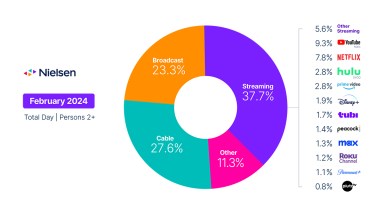The impact of the COVID-19 pandemic has been widespread, and the effects across lives and industries will be long lasting. Consumers, forced at home for extensive periods last year, looked to media—in all of its forms—for news, entertainment and solace. But the media industry, just like all others, wasn’t prepared for the grand shift in daily life that the pandemic forced, seemingly overnight. And with that in mind, it’s more important than ever to use data to inform what content and audience engagement looks like as life begins to come back online. When evaluating any data set, it’s important to understand how that data was gathered, as well as the outside influences that led to the observed trends.
To that end, Nielsen looked internally at its own process for estimating the ratings via our observational panel, a source of audience estimates that fuels the media industry. In order to comply with state and federal guidelines, and ensure the safety of Nielsen associates and the families that participate in our panels, Nielsen paused all in-home activities at the onset of the pandemic. A series of innovative procedures were put in place, aimed at protecting the overall fidelity of audience estimates and maintaining a robust sample size. During the COVID-19 period, Nielsen transformed the way it manages its panel to leverage more remote techniques and address the challenges of this unprecedented time. While this drove a sample size smaller than it was pre-COVID, it remains robust and representative.
Still, without a doubt, the pandemic amplified changes in media behavior, but many of the changes were underway when consumers began to quarantine in mid March 2020. Importantly, our national TV audience measurement data highlights that total TV viewing has declined in recent years. For example, in Q1 2019, on average, 20.8% of people 2 years old and older were using television across the total day, a number that declined to 19.1% in Q1 2021.
As would be expected, TV viewership, as well as other media consumption, spiked when people were forced to stay at home, with massive jumps in news viewing. But after the initial shock of the pandemic arriving passed, consumers’ shifting media habits continued.
In addition to being disruptive to daily life, the pandemic stymied content production. It also sidelined sports of all types until the third quarter of 2020. In aggregate, the combination of more repeats, delayed premieres, programs produced in homes (and basements) and the lack of sports heightened the challenges for the TV industry—challenges that inspired some audiences to seek out new content. SVOD programming, news and nostalgic comedy programs fared well, but the overarching shifts in total TV viewing are bigger than specific program genres.
In looking at available programming options, there were 13% fewer new episodes on traditional TV in October 2020 compared with the same month in 2019. That led to a 75% increase in programming repeats. Additionally, a Nielsen analysis of broadcast programming determined that the premiere dates during the 2020-2021 TV season aired almost a month (29 days) later than in the previous year(1).
With less new linear programming available, the shift to video on demand (VOD) content wasn’t surprising. With big stars, massive production value and pop culture awareness, VOD options continue to increase viewing share. Between December 2019 and December 2020, total minutes streamed directly to the TV glass, across streaming-capable homes, increased from 117.7 billion to 132 billion. The VOD space is expanding as well, with Netflix adding a record 37 million subscribers(2) last year and Disney+ reaching more than 86 million subscribers(3) in just 13 months of launching.
Importantly, traditional TV engagement isn’t just the result of fragmenting video options. Consumers continue to grow their audio streaming diets, especially while staying at home more. Streaming audio consumption increased by 39% on computer/mobile between May 2020 and January 2021. Podcasts, even without daily commutes for many, continue garnering increased listenership, with particular growth among multicultural listeners. In aggregate, the 18+ podcast audience grew by 8 million consumers last year. And what’s more, evening listenership (7 p.m.-midnight) increased 27% and 26% last year among persons 18-34 and persons 35+, respectively.
Ahead of this year’s TV upfronts/newfronts, media buyers and sellers need to take heed of these trends and understand the unique impact COVID has had not just on programming and content, but on all aspects of the industry.
The pandemic has both bottlenecked and accelerated aspects of the media industry, acting as a polarizing factor for consumer segments. Media consumption has been fragmenting for years, particularly as consumers become exposed to new options and platforms. Streaming options are an easy scapegoat for the recent declines in TV viewing, but given that total TV viewing includes connected TV viewing, the reality is that viewing is fragmenting beyond the TV glass. The consumption of content on other devices plays into this, and further illuminates the power of content. Consumers will always gravitate toward options that appeal to them, and the shifts we’ve seen are evidence that they will juggle their media options to fit their lifestyles and preferences. True audience measurement data provides clear insight into those preferences, and having those insights can help navigate future decisions, regardless of how unprecedented the situation might be.
To learn more about these trends and to understand how Nielsen is working to help the media industry interpret the full impact COVID-19 has had on measurement, download a full report.
Notes
- Nielsen analysis based on 50 programs for ABC, CBS, NBC, and Fox
- Wall Street Journal
- The Hollywood Reporter



